Horatio Hornblower is a fictional officer in the British Royal Navy during the Napoleonic Wars, the protagonist of a series of novels and stories by C. S. Forester. He later became the subject of films and radio and television programmes, and C. Northcote Parkinson elaborated a "biography" of him, The True Story of Horatio Hornblower.

Captain Horatio Hornblower is a 1951 British naval swashbuckling war film in Technicolor from Warner Bros., produced by Gerry Mitchell, directed by Raoul Walsh, that stars Gregory Peck, Virginia Mayo, Robert Beatty and Terence Morgan.

Mr. Midshipman Hornblower is a 1950 Horatio Hornblower novel written by C. S. Forester. Although it may be considered as the first episode in the Hornblower saga, it was written as a prequel; the first Hornblower novel, The Happy Return, was published in 1937.
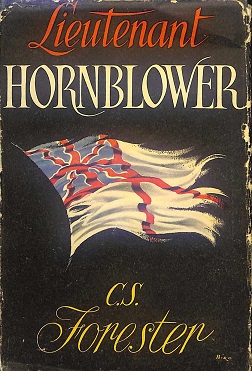
Lieutenant Hornblower is a Horatio Hornblower novel written by C. S. Forester. It is the second book in the series chronologically, but the seventh by order of publication.
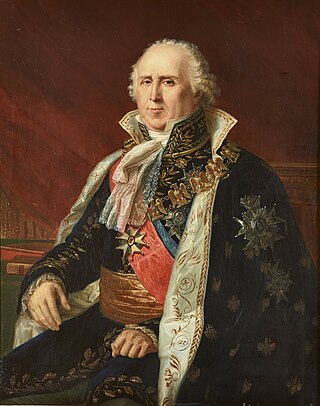
Charles-François Lebrun, 1st duc de Plaisance was a French statesman who served as Third Consul of the French Republic and was later created Arch-Treasurer and Prince of the Empire by Napoleon I.
The Even Chance is the first of eight Hornblower television adaptations relating the exploits of Horatio Hornblower, the protagonist in a series of novels and short stories by C.S. Forester. The Even Chance is the name given to the film in the United Kingdom, while in the United States it is known by the alternative title The Duel.
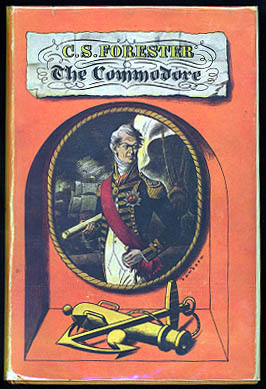
The Commodore is a Horatio Hornblower novel written by C. S. Forester. It was published in the United States under the title Commodore Hornblower.

Hornblower in the West Indies, or alternately Admiral Hornblower in the West Indies, is one of the novels in the series that C. S. Forester wrote about fictional Royal Navy officer Horatio Hornblower.
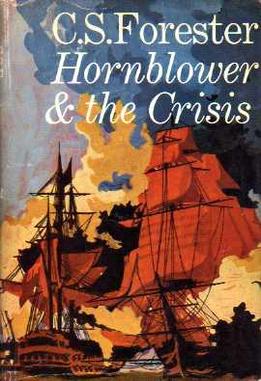
Hornblower and the Crisis is a 1967 historical novel by C. S. Forester. It forms part of the Horatio Hornblower series, and as a result of Forester's death in 1966, it was left unfinished. There is a one-page summary of the last several chapters of the book found on the final page, taken from notes left behind from the author. It was the eleventh and last book of the series to be published, but it is fourth in chronological sequence.
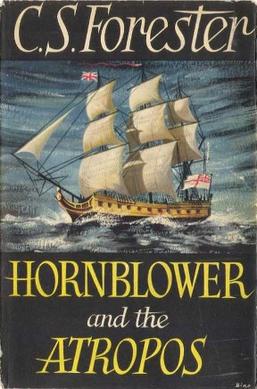
Hornblower and the Atropos is a 1953 historical novel by C.S. Forester.

Flying Colours is a Horatio Hornblower novel by C. S. Forester, originally published 1938 as the third in the series, but now eighth by internal chronology. It describes the adventures of Hornblower and his companions escaping from imprisonment in Napoleonic France and returning to England. It is one of three Hornblower novels adapted into the 1951 British-American film Captain Horatio Hornblower R.N..
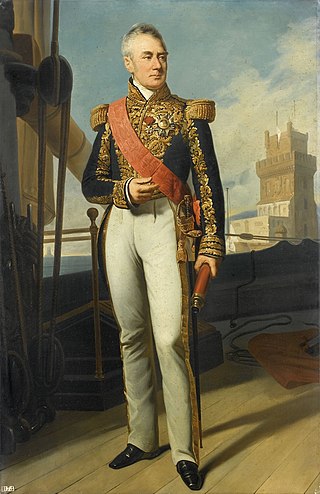
Albin Reine Roussin was a French admiral and statesman.
HMS Nonsuch was a 64-gun third rate ship of the line of the Royal Navy, built by Israel Pownoll and launched on 17 December 1774 at Plymouth. She was broken up in 1802.

Operation Astonia was the codename for an Allied attack on the German-held Channel port of Le Havre in France, during the Second World War. The city had been declared a Festung (fortress) by Hitler, to be held to the last man. Fought from 10 to 12 September 1944, the Allied objective was to secure the harbour facilities intact, to deliver supplies to the Allied armies in Continental Europe. The Allies refused to let the civilian population be evacuated, despite offers of free passage by the fortress commander.

The action of 30 May 1798 was a minor naval engagement between a small British squadron and a small French squadron off the coast of Normandy, France during the French Revolutionary Wars. A British blockading force, which had been conducting patrols in the region in the aftermath of the battle of St Marcou earlier in the month, encountered two French vessels attempting to sail unnoticed between Le Havre and Cherbourg-en-Cotentin. Closing with the French, the British commander Sir Francis Laforey sought to bring the French ships to battle as they attempted to turn back to Le Havre before the British squadron could attack. The French were unable to escape, and Laforey's ship, the fifth rate HMS Hydra, engaged the French corvette Confiante, while two smaller British ships chased the Vésuve.

The Battle of the Îles Saint-Marcouf was an engagement fought off the Îles Saint-Marcouf near the Cotentin peninsula on the Normandy coast of France in May 1798 during the French Revolutionary Wars. Dislodging a British garrison on the islands was the main objective for French forces. The garrison allowed the islands to serve as a resupply base for Royal Navy ships patrolling northern French waters. Apart from expelling the British, the French sought to test new equipment and tactics, which had allegedly been developed with an intention of invading Britain.
HMS Dominica was a schooner that the British purchased in 1805 in the Leeward Islands. Her crew mutinied in 1806, turning her over to the French, who immediately sent her out as the privateer Napoléon. The British recaptured her four days after the mutiny and returned her to their service. In British service she captured some six small privateers. She was broken up in 1808.
Loyalty is the seventh film of the British TV film series Hornblower, based on the books by C. S. Forester, particularly Hornblower and the Hotspur. It was released on 5 January 2003, nearly four years after the first four films and nine months after the next two films.
Jacques Jean-Marie François Boudin, comte de Tromelin was a French general of the First French Empire.
The Hand of Destiny is a short story C.S. Forester wrote about his most popular character, Horatio Hornblower, written in 1940, and published in Collier's magazine. Sanford Sternlicht, author of C. S. Forester and the Hornblower Saga, notes the story has multiple inconsistencies with later stories. He also notes elements of the story that Forester re-used in later stories.














